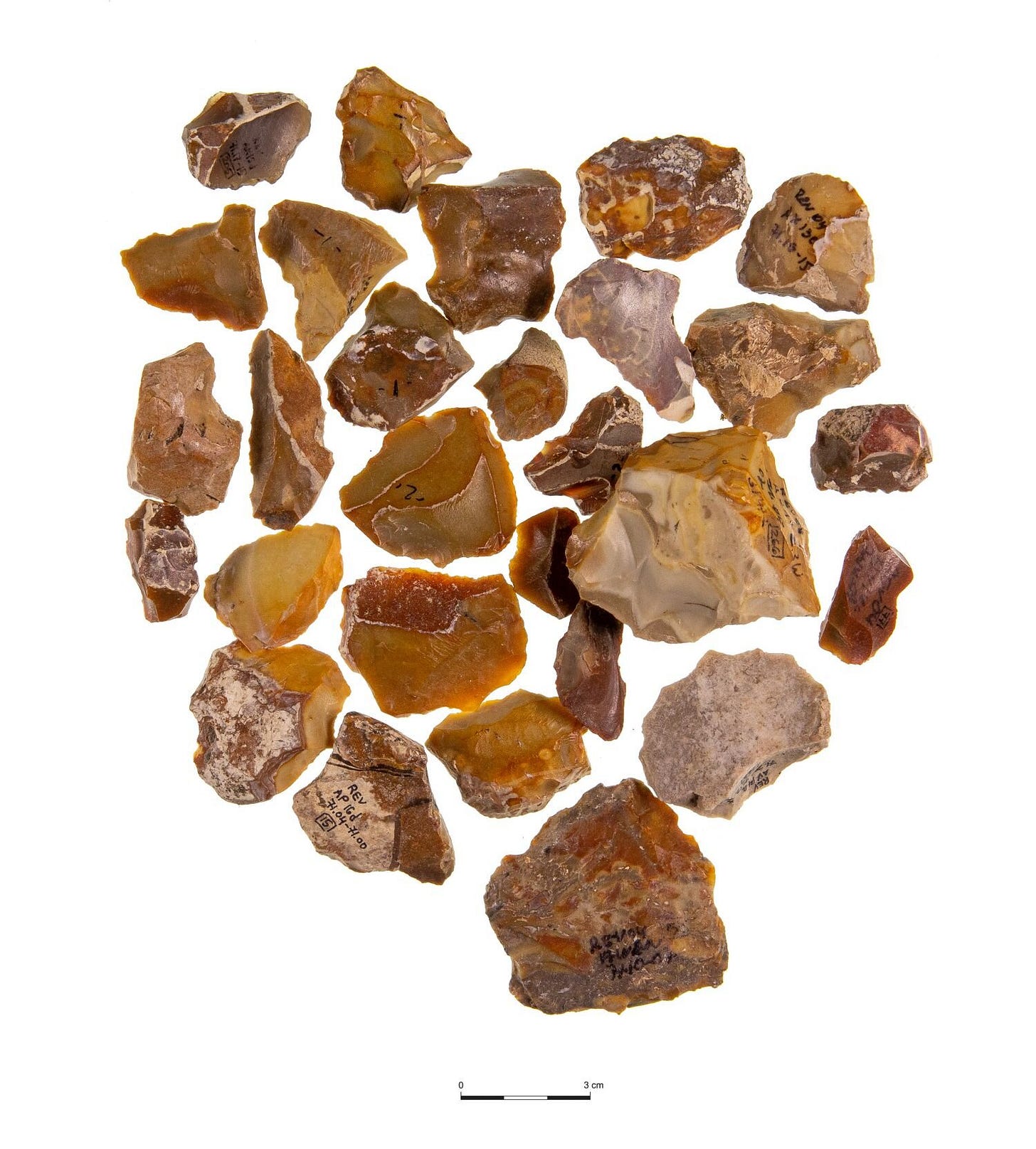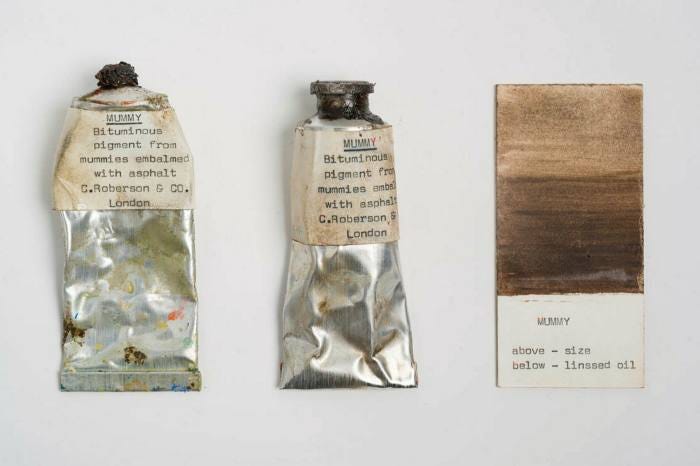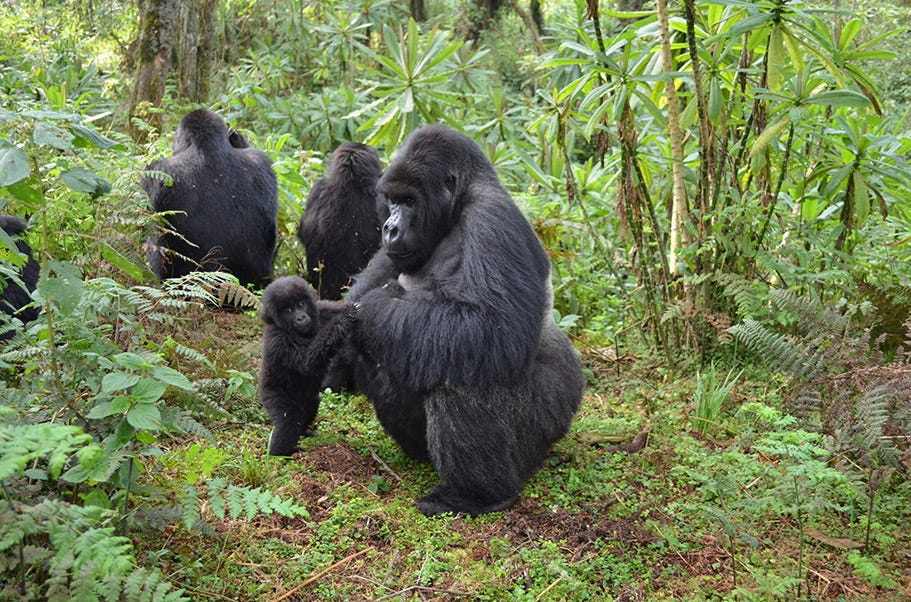Weekly Roundup- July 8th
Tut-mania, Imposter Syndrome, mummy brown, and the evolution of fathers— our favorites from the past week!
Why Are We So Obsessed with King Tut?
Kara was interviewed by Discover Magazine about our modern obsession with King Tut:
“The only reason a nine-year old becomes king of the most powerful and richest state in the ancient world is because his family is part of — and has to be part of — a system of inequality,” Cooney says. “It’s the unrepentant and positivist look at these kings and their treasure, without casting a critical eye to how they hoarded these resources, that is the dangerous part of the story.”
A great read and good summary of the various arguments and theories about the “boy king.” Why do you think the allure of King Tut remains as strong as ever? This is just our first article for this week focusing on Tut…this in and amongst itself should be telling. We are kinda giving side-eye to the Tut Centennial thing…

Collectors in the prehistoric world recycled old stone tools to preserve the memory of their ancestors
In a new study out of Tel Aviv University, Ph.D. student Bar Efrati and Prof. Ran Barkai found evidence for the collecting and reuse of even older stone tools. Why were ancient peoples choosing to reuse older flint tools? Flint was amply available. The people were consciously choosing to collect and reuse their ancestor’s tools in what Efrati and Barkai argue was a form of memory-making.
As we’ve discussed before and with Kara’s work on coffin reuse, are all cases of reuse about resource scarcity or are there larger social and ideological implications as well? It would seem in this case in Israel, ancient humans connected themselves to their ancestors through the manipulation of these objects. Kara remembers growing up with her great grandfather’s old tools in the garage. We used them as children in our rather dangerous “woodworking.”

Tutankhamun rises again in show looking at ancient Egypt’s cultural legacy
Everything is Tut-mania again (!!!!) ahead of the centennial celebrations in November, but the Masterpiece art fair in London is taking a different angle, moving away from the golden treasures and looking at other crazes. Entitled Avoiding Oblivion, the show tracks the West’s obsessions with ancient Egypt from early 18th century through to today. What was the cultural legacy of the “discovery” of Tut’s tomb? How has it changed over time? One macabre result of this connection— mummy brown, a pigment actually created from ground up mummies (see below), a rich color sought after and longed for by artists because… human body makes a beautiful color, I guess.
The photos in this article are soo cool!

Neil Gaiman Confirms Highly Relatable Anecdote About Neil Armstrong Is Actually True
As Neil Gaiman relates, even the most successful of people suffer from Imposter Syndrome from time to time.
"Because if Neil Armstrong felt like an impostor, maybe everyone did. Maybe there weren’t any grown-ups, only people who had worked hard and also got lucky and were slightly out of their depth, all of us doing the best job we could, which is all we can really hope for."
For most, imposter syndrome is one of the first things you learn (and feel) when you enter post-secondary education. If you’re lucky, you might not experience it until graduate school, but it eventually claims us all. Part of the process is learning to deal with those thoughts and feelings, and persevering despite the mean things your inner voice is saying. Just please note that we are all imposters, in our ways, and let us be imposters creating awesome shit together.

Rare Timbers From 17th-Century Spanish Shipwreck Discovered Off Oregon Coast
The Santo Cristo de Brugos, a Manila galleon sank off the coast of Oregon in 1693 while on a trip from the Philippines to Mexico. Last week, the Maritime Archaeological Society successfully recovered parts of the wooden hull. After radiocarbon dating, they have confirmed that it is the Santo Cristo de Brugos. This makes the vessel one of only three Manila galleons with surviving lumber pieces in the world. It is unclear if there is any further wreckage to be found.
And all thanks to a fisherman walking on the beach during COVID-19 lockdowns... And the author posits that this wreck might have inspired Steven Spielberg’s 1985 film The Goonies. And let Kara just say:
This film absolutely ruled my late childhood hanging out with my younger sister and brother in Houston, Texas with nothing else to do but watch toads fry on the asphalt. We know the words of that movie by heart. And when I tried to show my son the movie too early, he was afraid of the gangsters. And when I tried again, he wasn’t into it anymore because it wasn’t cool. Insert crying emoji here for me….

Did Dads Evolve?
Among mammalian species humans are unique in the role that fathers play in the rearing of children. Even looking at Great Apes, our closest relatives, dads don’t play a large role compared to us. A recent study in the 2020 Annual Review of Anthropology asked whether fatherhood was an evolutionary adaptation by humans? Damn those larger primate brains and the amount of time they take to mature! Two parents? Well, yeah because… The researchers looked at a group of Mountain Gorilla, one human relative that does have males spending more time with the children. The researchers found that the advantages were many; from protection of the children to social activities in which the child learns from the male relations, and even in which the child-loving male is chosen as a mating partner more frequently. (Kara scream yes here, but it’s not always easy to get it right with Husband #1).
Obviously human fatherhood is highly complex, with each culture having its own expectations and constructs of the role of the father. But next time you’re with dad, consider how our hominid ancestors might have evolved the role.






